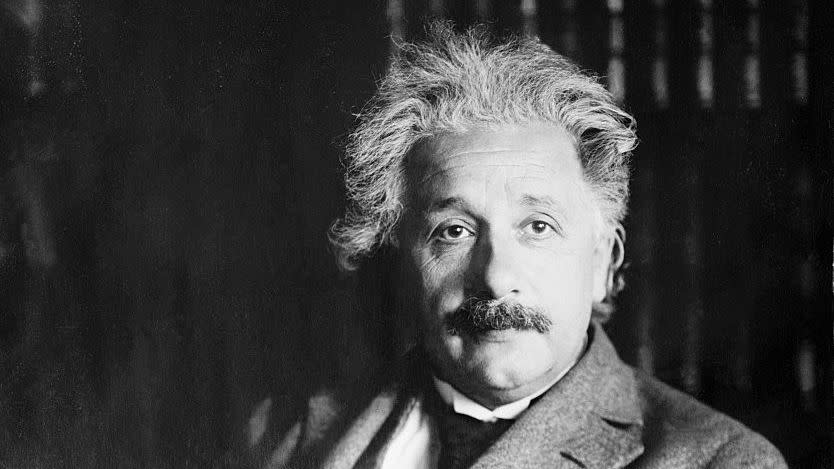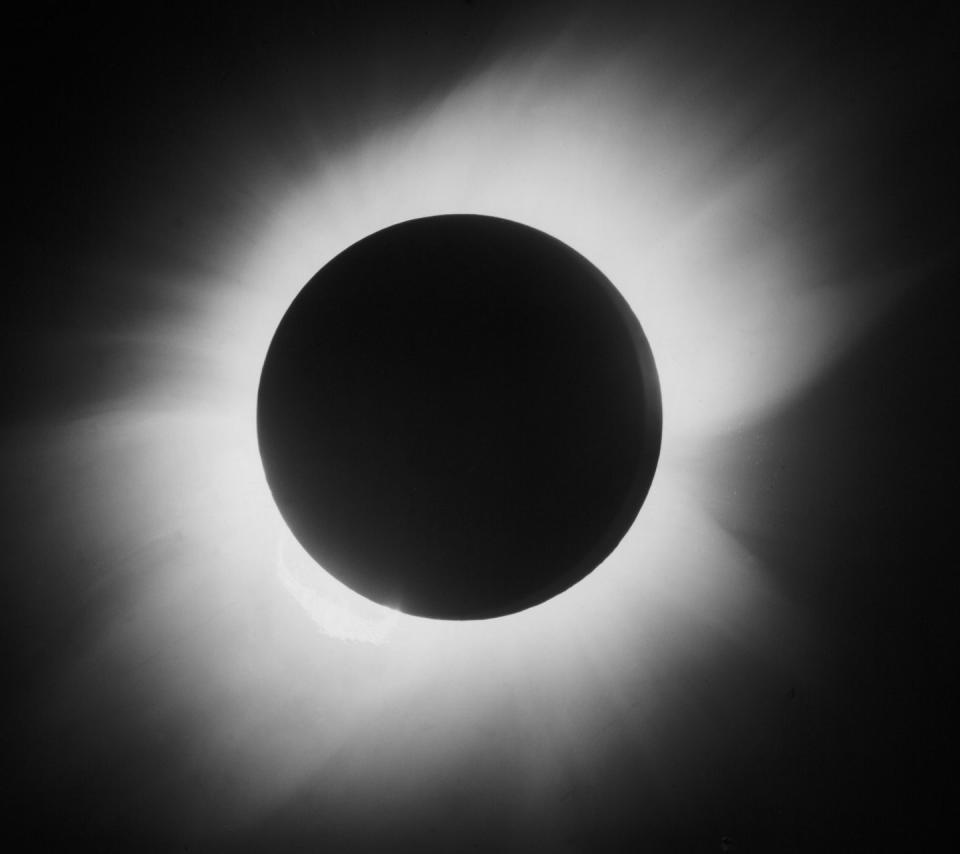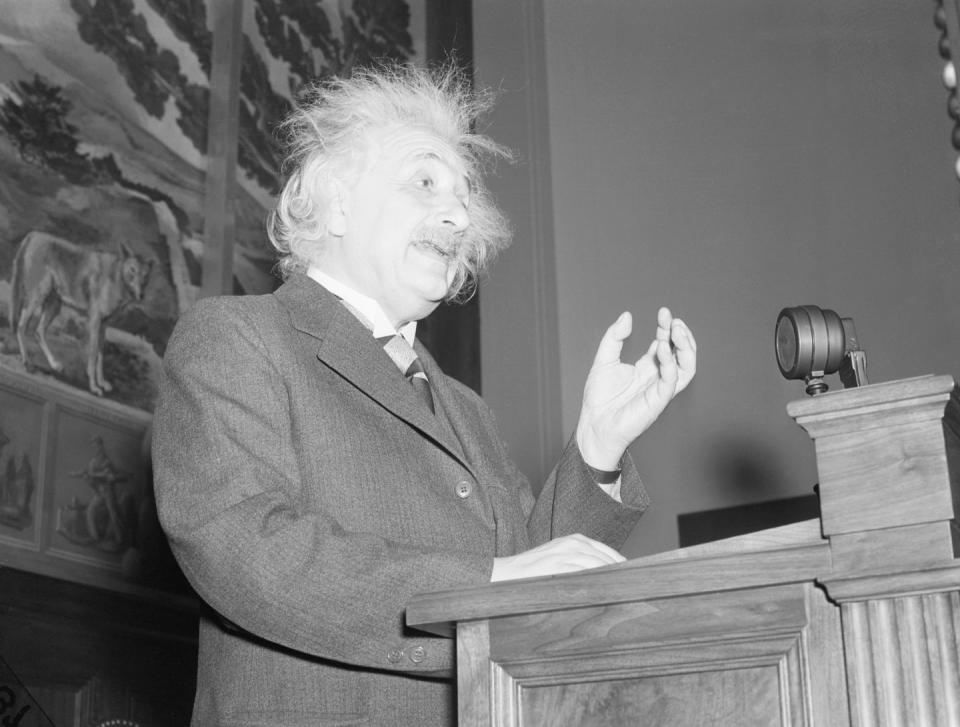A Total Solar Eclipse Made Albert Einstein a Scientific Superstar

- Oops!Something went wrong.Please try again later.
"Hearst Magazines and Yahoo may earn commission or revenue on some items through these links."
Monday’s total solar eclipse is set to deliver spectacular sights across North America—provided you’ve obtained the right pair of protective glasses or binoculars. But another eclipse more than 100 years ago offered more than a brief moment of celestial wonder.
A solar eclipse in May 1919 helped prove one of Albert Einstein’s most famous hypotheses: his theory of general relativity. The discovery changed our understanding of physics and cemented Einstein’s status as one of the most influential scientists in history.
Einstein’s theory of general relativity dates back to 1905
Einstein’s theory, completed in 1915, is centered around gravity. Rather than being an invisible force that attracts objects to each other, gravity—as explained by relativity—is a curving or warping of space-time caused by concentrations of mass and energy. According to Einstein, this affects the motion of anything that passed nearby, including light.
Einstein had begun working on his theory in 1905 and was so confident in his principle that he asked researchers to carry out an eclipse experiment as early as 1911. He even raised his own money to fund it. He found a volunteer in German astronomer Erwin Freundlich in 1914, but the expedition was scrapped following the assassination of Archduke Franz Ferdinand and the outbreak of World War I.
Finally, in 1919, Einstein got his chance.
The 1919 solar eclipse experiment focused on the stars

In order to test Einstein’s idea, English astronomers named Arthur Eddington and Frank Dyson launched expeditions to chart stars during the total solar eclipse on May 29, 1919. The scientists planned to pinpoint the positions of stars around the sun during “totality,” or when the sun’s light is completely blocked by the moon, and compare them to normal conditions. If there was a difference in their locations—even one so slight that it would be visible to the human eye—this would indicate the sun had deflected their light through a curving of space.
According to Smithsonian Magazine, Eddington traveled to the island of Principe, off the African coast, while Dyson sent two members of his staff to Sobral, Brazil, to perform the calculations. Whereas the 2024 eclipse has a maximum length of 4 minutes, 28 seconds along the path of totality, the duo and their teams had more than 5 minutes to examine the sky. The stars’ positions were recorded on glass plates, which were then brought back to England for further examination.
The results were, mostly, expected
Eddington and Dyson both deemed the experiment successful, as their results were very close to Einstein’s predictions for the amount of deflection. Well, at least the majority of them. One of the telescopes in Dyson’s expedition produced odd readings, with the stars looking like smudges and not rounded circles. So, he threw those respective plates out.
This has led some historians to speculate Dyson might have done so to exclude data that didn’t match the intended outcome, but University of Arkansas physics professor Daniel Kennefick, who wrote the book No Shadow of a Doubt about the 1919 eclipse and its findings, said this was highly unlikely. “It is rare to be completely neutral in science or life. Punishing Eddington for being honest in articulating his preferences is merely asking that scientists dishonestly suppress their views,” Kennefick said.
Einstein never doubted his theory

Einstein found out in September 1919 via telegram the results of the experiment had proven him correct. Although, he already knew they would.
Kennefick told Smithsonian Magazine that physicist Ilse Rosenthal-Schneider was allegedly with Einstein when he received the message and surprised by his lack of enthusiasm for the findings. “She said, ‘Well, what would you have said if the theory had found against you? Would you have been disappointed, in that event?’” Kennefick explained. “And [Einstein] smiled and said, ‘Well then I would have been sorry for the dear lord, because the theory is correct.’”
Another solar eclipse in 1922 would offer a chance to confirm Eddington and Dyson’s results, but the scientific community was eager to celebrate Einstein as a luminary before then. Eddington presented the results at a Royal Society meeting in London on November 6, 1919—in front of a picture of Sir Isaac Newton, whose ideas of gravity Einstein had revolutionized—and they were published the following day.
The Times of London called the findings a “revolution in science,” and Einstein’s popularity skyrocketed. He soon embarked on lecture tours across the United States, United Kingdom, France, and Japan, with crowds lining up to see him. According to Discover magazine, one woman even fainted upon meeting Einstein.
Two years later, in 1921, Einstein was awarded the Nobel Prize in Physics for “his services to Theoretical Physics, and especially for his discovery of the law of the photoelectric effect,” all but cementing his legacy.
The theory of general relativity continues to help us navigate our world and understand the universe beyond. According to the Royal Astronomical Society, astrophysicists use relativity to explain the movement of stars and planets and how matter behaves in extreme regions of space—particularly black holes. Non-scientists rely on relativity every day, as satellite navigation systems use it to pinpoint travel coordinates. Knowing that it all ties back to a solar eclipse, you now have a better understanding of the gravity of Monday’s eagerly-awaited celestial event.
You Might Also Like

